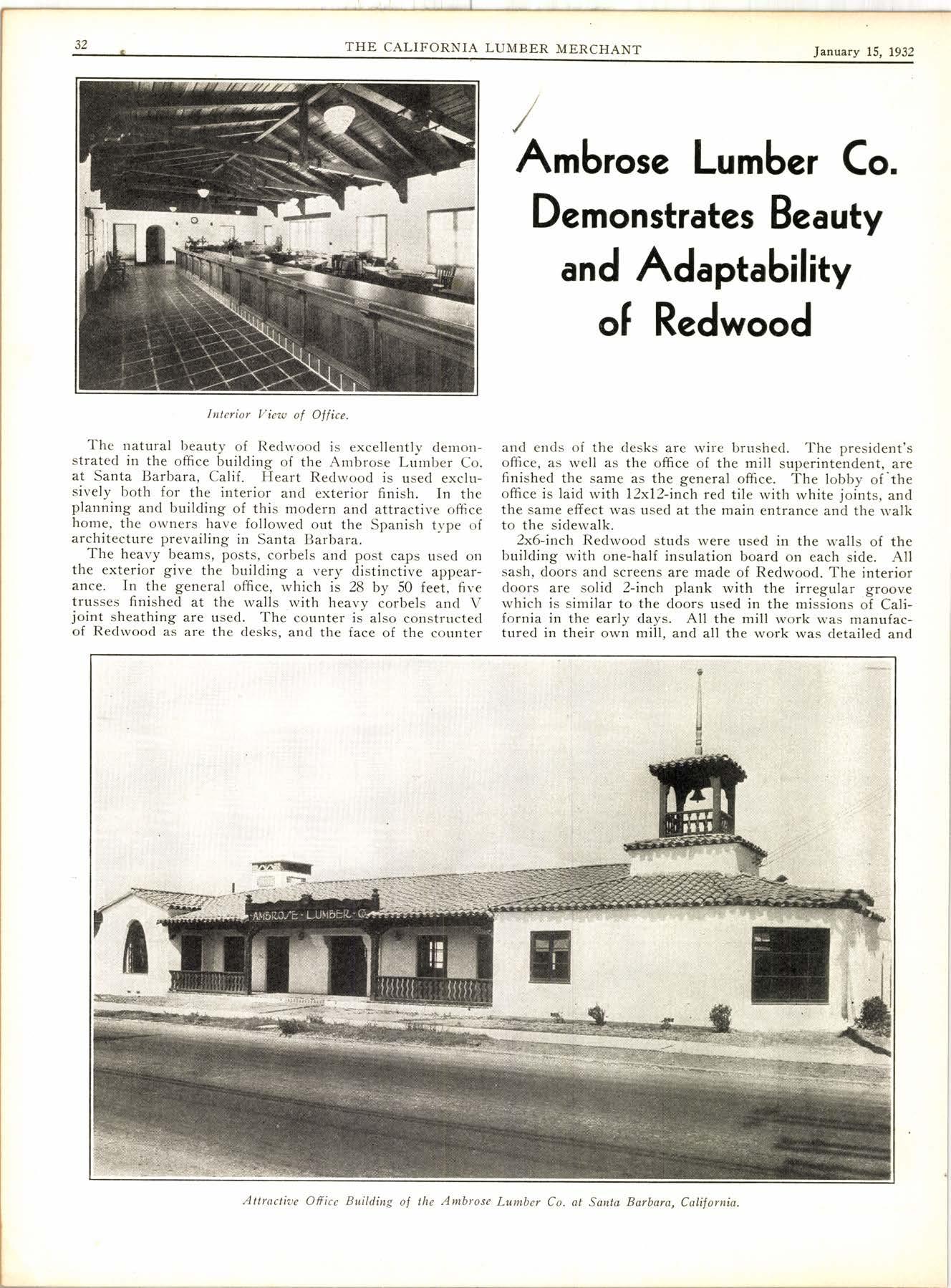
4 minute read
The Douglas Fir Industry in 1931---6nd the Outlook for 1932
\Uest Coast Lumbermen's Association
During the 52 rveeks of l93l a group of 306 mills in the Douglas fir region reporting production to the West Coast Lumbermen's Association averaged in output 36.5 per cent of capacity. These mills represent more than 9O per cent of the industry in Western Oregon and Western Washington. Their average production to capacity in 1930 rvas 54 per cent; in lgD it was 72 per cent.
During the last week of 1931, the Douglas fir lumber industry operated at 16 per cent of capacitv-the lowest figure yet recorded by the West Coast Lumbermen's Association. The last week of the old year was the tenth successive seven day period with orders in excess o{ production. No other ten weeks' period of orders consistently above production has occurred since August-September, 1930, and if orders exceed production with West Coast mills onle more week, this former record will be broken.
The retail stocks of lumber throughout the United States and the supplies in distributors' yards are low. The New York Lumber Trade Journal issue of January 1 states: "Group yards, comparable to the line yard situation in the West, have been borrowing from each other, and truck hauling for considerable distances even a fer'v feet of needed items, in some cases, eking out full or nearly full truck loads r,r'ith stable stocks to hold clown excessive overhead in the shape of delivery costs", describing the situation in the Atlantic Coast area which reflects in an accttrate $'ay, our information concerning many of the larger centers.
Industrial stocks of lumber also are lorv. Many retailers seeing local building prospects improving rvill start buying if mill stocks are further depleted, and if indications point to rising prices. Such buying will follorv, in our judgment, the period of extremely lorv lumber production during the mid-winter. The situation may be described as in a strengthening position.
Compared with other basic industries. West Coast lumber more thar-r held its or,vn this year, and this fact is a sound reason for expecting betterment in both volume and values provided a favorable relationship betrveen orders and production continues during the first three months of 1932. During the first eleven months of 1931, a group of 198 mills reported orders to the West Coast Lttmbermen's Association, 25.9 per cent belolv those in the same period of 1930. Building, in eleven months, according to Bradstreet's, decreased 27.3 per cent ; lvhile in steel manufacture, the f o1lorving reductions from last year were recorded : structural, 28 per cent; fabricated plate, 34.7 per cent; and commercial castings, 55.2 per cent.
The softwood lumber production in Oregon and Washington (including the west side areas) during 1931 rvill total, according to our calculations, approximately 6.35 billion boarrl feet. In 193O, the total was approximately 9.O5 billion; and in 1979, about 11.97 billion. The 1931 produc- tion, therefore, is but little more than half that of l9D, and 3O per cent less than the volume of 1930.
The value of the lumber sold by the lumber mills of Oregon and Washington in 7929 was approximately $2ffi,740,000; in 1930, it was approximately $166,700,000; and in 1931, it will be about $10O,000,000. The total payroll which in 1929 approximated $135,00O,000, will be in 1931 about $41,700,000. The industry of the two states in timber, logging equipment, railroads, sawmills, and so on, represents an investment of about 1000 million dollars.
The average sales return to the mills in the Douglas fir region-comprising 80 per cent of the two states production-shrunk from $20.48 per thousand feet in 1929 to $13.96 in the first eight months of 1931. Costs of production in Douglas fir have exceeded the average price received by $2.2O per thousand feet from January to August this year. The industry is selling lumber at a lorver price than at any time since 1916.
The Association's Cost Analysis of mills during the first eight months of 1931 shows an average sales return of $13.96 for all lumber and an average labor cost of $7.N, or 51.5 per cent. Applied to the cost-which exceeded the selling price by $Z.2G-the labor charge is 44 per cent. The $2.20 loss per thousand feet absorbed by the Douglas fir industry went mostly to labor, as labor is by far the largest item in the cost of production.
The position o{ general business ancl industry, here and abroad, indicates that rve are now in a period when the first cost of buildings, roads, bridges and other structures will be a consideration of prime importance. I-ow cost in place and almost universal usefulness makes lumber a good "hard times" material. A building of wood-even if treated for fire resistance and against decay so as to be "permanenl"can be erected today for from 4O to 60 per cent of the cost of other similar construction. Cities, highway engineers and industrialists having building projects which must go forlvard, are now paying more attention to the savings possible through proper wood use than they have at any time u'ithin the past ten years.
A county in California, for example, which has not built a rvood bridge in twelve years, has announced a forthcoming project including twelve treated timber bridges mostly of Douglas fir, due entirely to the economy in place of wood and the satisfactory record in other places. This type of "perrnanent" wood construction is given a life of from 20 to 3O years by county and state engineers, which is as long as most engineers care to plan the useful life of highway bridges.
The lolv cost of rvood in use is the industry's present opportunity to help itself. The West Coast Lumbermen's Association plans to take every advantage of this fact for promoting a greater use of Douglas fir, West Coast hemIock, Western red ce<lar and Sitka Spruce during 1932.










